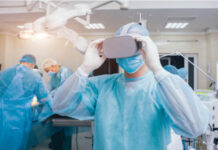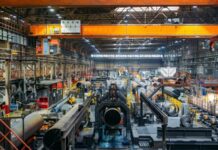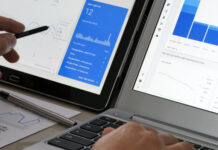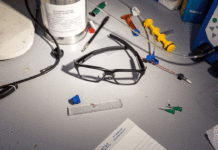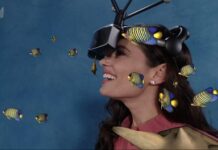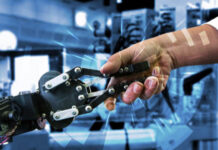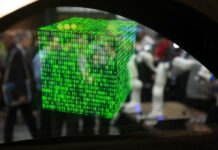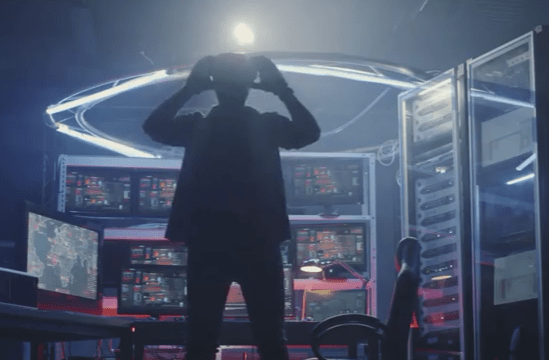
Mixed reality is the blending of the physical and the virtual world using technological interaction. This term is used as an umbrella term to describe virtual and augmented reality which both manipulates the physical world by adding digital elements. These technologies form the core of a digital revolution. They will take several business and industry tools from a 2D to a 3D space. This stands in direct contrasts of its initial niche which was rooted in the gaming industry, now businesses are already experimenting with MR in terms of training and production.
How do mixed reality devices work?
The details of MR devices are incredibly complex to understand. The basic concept lies in the interaction between the user, the headset, and the cloud-based servers that host the MR software. The headsets rely on several components to create AR and VR content like cameras and sensors that work together to create a seamless experience. The hardware of the headsets work in conjunction with the software to either overlay 3D elements or create new virtual environments. The software is a critical component for the development of the holographic experience of MR.
MR devices are usually connected to a remote server. This stores the virtual objects that will be generated by the headset. The server is responsible for sending virtual objects to the device’s processor from there it utilizes the images to create virtual and augmented content. Servers play an important role in allowing real-time collaboration between several users in multiple locations. It is this remote feature that is a big selling point when businesses consider MR solutions. It not only cuts costs, it also saves a lot of time.
Mixed reality for business:
Businesses often ask, “How MR can be used for their individual needs. The answers are often broad. Brave Williams, assistant professor at Husson University’s New School of Communications says, “It is like asking how a business would benefit if every employee had a cell phone and were able to be reached every single hour of every single day.” He further states, “that the applications are numerous and the possibilities are endless.” Even though many of these applications are still in the experimental phase, many businesses are already adopting them. The applications are already evolving at a rapid rate. Here are some examples.
⦁ Training: MR enables what is called “experimental training” which allows employees to experience a situation first-hand in a simulation. This simulation gives employees the freedom to make mistakes without putting anyone else in danger. It also protects company assets in the process. This has been especially helpful in the manufacturing industry and the medical field. This eliminates the need for new employees to spend weeks reading dense manuals and detailed safety protocols. Instead, they are placed directly in a situation where their practical skills are used and implemented immediately. This then allows for efficient learning and training.
⦁ Project development: Architects and builders have also taken advantage of MR when planning and strategizing buildings. Project development has been made easy with the use of 3D models. A dynamic 3D blueprint can significantly improve planning and design when discussing a project with a client. The architect or builder can also design digital structures before starting with the final planning process. It makes it easier to place buildings in desired locations. This is also a very attractive element for a firm to sell to their clients. Digital interaction often puts companies far ahead of the competition that still relies on traditional methods of project development.
⦁ Sales: MR can be used as a very effective tool to assist in driving sales. Companies have already taken advantage of this feature to let customers try on virtual outfits or see what a product would look like in their home before purchasing it. IKEA, for example, announced its AR app called IKEA Place and this allows the user to virtually place furniture inside their home before purchasing it. Warby Parker also combines AR technology and facial scanning in an app that allows the customer to “try on” glasses before purchasing them. Retail is one of the industries adopting MR technologies at a rapid rate.

Mixed reality devices available today:
⦁ Microsoft HoloLens 2: This design builds on the original HoloLens. It increases the whole field of view. This version upgrades the interface which allows users to pinch and pull objects in a way that feels natural. It responds to voice commands by using natural language processing. The device consists of 64GB of storage, 4GB of RAM, and Qualcomm Snapdragon 850 compute platform. Light cameras have been installed for head tracking and two IR cameras for eye tracking. It can also capture 8MP images and record 1080p30 videos.
⦁ Vuzix M400: This device has yet to be unveiled the company recently announced its existence at the Mobile World Congress in Barcelona, Spain. According to Vuzix, the M400 is the first headset powered by Qualcomm Snapdragon’s XR1 which is a powerful processing platform that supports the use of on-device machine learning algorithms. Many leading headsets are aimed at enterprise use and this is the direction in which Vuzix is going with the M400 also. The company wants to move away from the idea that MR headsets are reserved solely for the gaming industry and they want to release a professional headset for the professional working environment.
⦁ Magic Leap: Magic Leap is said to be the best-kept secret of the MR world and it was a welcome surprise when it was finally announced. The Magic Leap One Creator Edition is a suite that makes digitally created objects “aware” of their surroundings. It is mainly aimed at entertainment, gaming, and creativity. It has a powerful processing system that holds a lot of potential for the business world as well. It is currently priced at $2,295. The company released a limited edition Game of Thrones version for die-hard fans.
⦁ Google Glass Enterprise Edition 2: This lightweight wearable device looks a lot like an ordinary pair of glasses and it aims to streamline hands-on work by giving contextual information directly to the job site. This allows workers to access instructions and training videos while they are busy working in a remote location. Workers who requite blueprints on demand can also access it within no time with this device. It streamlines the common workplace by connecting employees with each other. Google Glass is currently only available through select partners and costs can vary based on customization and training requirements.
⦁ DAQRI: Aimed at AR for productivity and work applications, DAQRI smart glasses provide a perfect solution for business enterprises. The selling point of this device is the fact that it is portable and mobile which means it can easily be clipped to a belt, leaving users free to use their hands. It comes with access to Worksense Standard which is DAQRI’s custom suite of productivity apps. The device offers a 44-degree diagonal field of view with a resolution of 1360 x 768. It has a frame rate of 90 fps a well as a rechargeable lithium-ion battery.
What is the future of the industry?:
It can be very easy to lose track of all the developments in a new and emerging market such as MR. Co-founder of The Venture Reality Fund, Tipatat Chennavasin, is working to finance MR studios. That way there is a wide range of content to explore when the market is fully developed. He stated that a lot of people are asking what the driver adoption VR and AR adoption will be. He compares this to the driver adoption of PCs. It didn’t exist in detail at first – it was limited to desktop publishing like Microsoft Office. It later developed into the systems we know today.
He further said, “The market is still at the developing stages. There are strong indications that it is already a very healthy market. He used MR studio, Owlchemy Labs, as an example. The company made $3 million in less than a year in software revenue from VR. This is proof for Chennavasin that the market is growing at an excellent rate. Many other companies have repeated this pattern and many start-up businesses are being bought over by bigger tech corporations to invest in and develop MR technologies.
Chennavasin states that as the industry evolves and the technology improves there may even be crossovers taking place between MR and other emerging technologies such as machine learning and artificial intelligence. Even though that day is still a few years away, the emergence of MR has the future of technology on everyone’s minds. He further said that the market is in the experimental stage and it has a lot of potential to develop into something huge. He says it is not just playing a video game but it is an experience people are absorbing and building on to create even better experiences.
References:
Uzialko, Adam: Mixed Reality Finds Its Niche In Industrial and Business Applications, Business News Daily. 8 May 2019. businessnewsdaily

